Customs
Happy April Fool’s Day 2019
Jokes were more gruesome in 1909.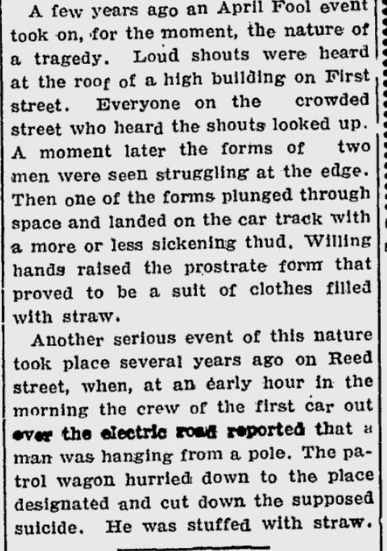
Source.
Posted By: Paul - Mon Apr 01, 2019 -
Comments (4)
Category: Customs, Death, Hoaxes and Imposters and Imitators, Holidays, Humor, 1900s
Lady Fishbourne’s Complete Guide to Better Table Manners
Lady Fishbourne's Complete Guide to Better Table Manners, Janet Perlman, provided by the National Film Board of Canada
Posted By: Paul - Tue Mar 05, 2019 -
Comments (1)
Category: Antisocial Activities, Culture and Civilization, Customs, Etiquette and Formal Behavior, 1970s
Reno Divorce Myth
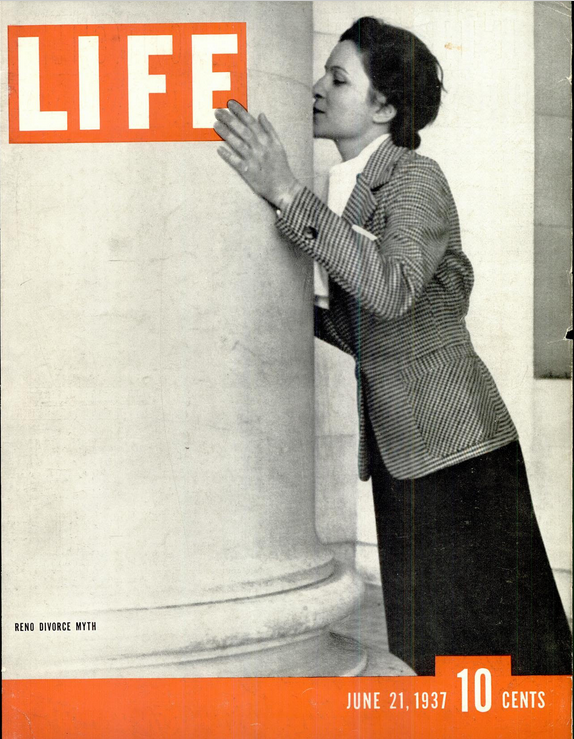
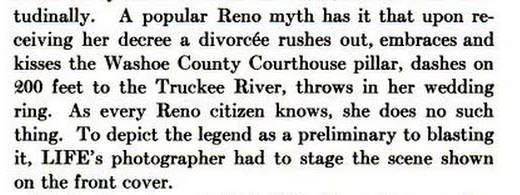
Original photo and article here.
Posted By: Paul - Fri Jun 09, 2017 -
Comments (2)
Category: Customs, Regionalism, Divorce, 1930s
The Playground Jungle
You could easily spend hours at The Playground Jungle, investigating all the childhood lore you half-recall, whether silly or naughty.Here's a seasonal ditty I had never heard of:
We three kings of Leicester Square
selling ladies underwear
how fantastic, no elastic
not very safe to wear
O, star of wonder, star of light
the royal knickers caught alight
how fantastic, no elastic
guide me to the traffic lights
Or you could also buy their book.
Posted By: Paul - Thu Dec 08, 2016 -
Comments (4)
Category: Antiques, Anachronisms and Throwbacks, Culture and Civilization, Customs, Children
Trial By Touch
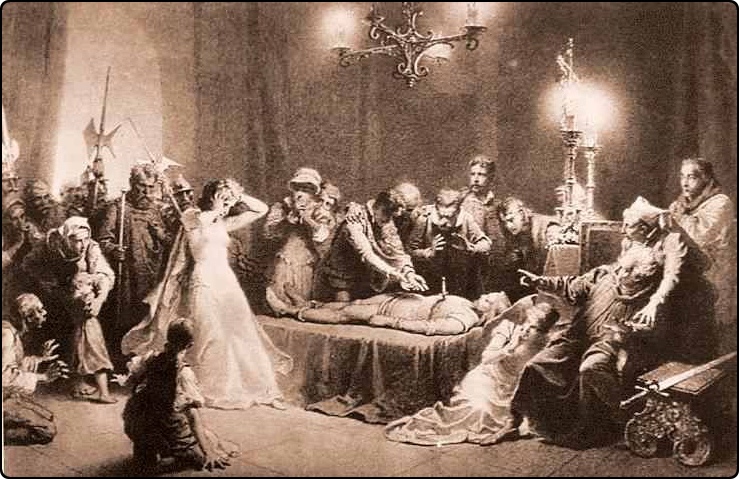
Back in colonial times, the American legal system occasionally relied upon a curious form of murder investigation known as "Trial by Touch." The book Legal Executions in New England: A Comprehensive Reference offers this explanation:
That same book offers a number of examples of people found guilty by means of the Trial by Touch. For instance, in 1644 Goodwife Cornish of York, Maine, was accused of killing her husband, whose body was found floating in the York River:
Both of the accused were next brought before a council of local officials. The ensuing "trial" was a farce. The prosecution's only evidence was the result of the "Trial by Touch" and hearsay about the woman's character. It was her reputation more than anything else that counted against Goodwife Cornish. She was declared guilty and condemned to death. Edward Johnson was acquitted.
During her "trial" Goodwife Cornish continued to deny all knowledge of the murder. She repeated her admissions of lewd conduct and even named a local official as one of her lovers. Few doubted the story because the man had a reputation of his own. Goodwife Cornish was hanged at York in December of 1644. There the matter ended.
Trial by Touch was referred to by a number of different names, such as "Ordeal by Touch" or "Ordeal of the Bier." The Penny Magazine (January 1842) explains this latter name:
I haven't found much info in academic sources about the Trial by Touch. Evidently the custom was widely practiced throughout Europe during the Middle Ages and then brought to America by settlers. And apparently a bleeding corpse wasn't the only indicator of guilt. If the corpse seemed to change color, sweat, or move at all, that would be enough to convict the accused. In The Old Farmer and His Almanack (1920), GL Kittredge offers the example of the trial of Johan Norkott in England (1628):
The illustration at the top is by the Hungarian artist Mihály Zichy (1894). It depicts a scene from a ballad about a woman found guilty, by means of the Ordeal by Touch, of killing her young husband (via Hungarian Art History).
Posted By: Alex - Fri Jul 29, 2016 -
Comments (1)
Category: Crime, Customs, Death
Life in America: 1948
Posted By: Paul - Sat Mar 22, 2014 -
Comments (7)
Category: Customs, 1940s, North America
Rat Burning Festival
Nowadays we have the Burning Man festival. But back in the 19th century, they had the Burning Rat festival.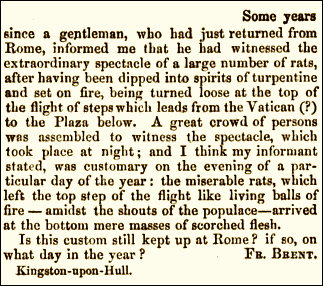
Is this custom still kept up at Rome? If so, on what day in the year?
From: Notes and Queries. Nov 28, 1857.
Unfortunately, I don't believe that the correspondent ever received a reply to his question.
Posted By: Alex - Wed Mar 05, 2014 -
Comments (9)
Category: Animals, Customs, Foreign Customs
Life in America: 1915
Posted By: Paul - Mon Feb 17, 2014 -
Comments (5)
Category: Customs, 1910s, North America
Life in America: 1959
Posted By: Paul - Mon Jan 20, 2014 -
Comments (2)
Category: Customs, 1950s, North America

| Who We Are |
|---|
| Alex Boese Alex is the creator and curator of the Museum of Hoaxes. He's also the author of various weird, non-fiction, science-themed books such as Elephants on Acid and Psychedelic Apes. Paul Di Filippo Paul has been paid to put weird ideas into fictional form for over thirty years, in his career as a noted science fiction writer. He has recently begun blogging on many curious topics with three fellow writers at The Inferior 4+1. Contact Us |




